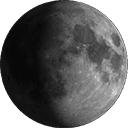The B0.5 IVe CoRoT target HD 49330 II. Spectroscopic ground-based observations
Author(s): Floquet, M.; Hubert, A. -M.; Huat, A. -L.; et al.
Source: ASTRONOMY & ASTROPHYSICS Volume: 506 Issue: 1 Pages: 103-110 DOI: 10.1051/0004-6361/200911927 Published: OCT 2009
Context. We present spectroscopic ground-based observations of the early Be star HD 49330 obtained simultaneously with the CoRoT-LRA1 run just before the burst observed in the CoRoT data.
Aims. Ground-based spectroscopic observations of the early Be star HD 49330 obtained during the precursor phase and just before the start of an outburst allow us to disantangle stellar and circumstellar contributions and identify modes of stellar pulsations in this rapidly rotating star.
Methods. Time series analysis (TSA) is performed on photospheric line profiles of He I and Si III by means of the least squares method.
Results. We find two main frequencies f1 = 11.86 c d(-1) and f2 = 16.89 c d(-1) which can be associated with high order p-mode pulsations. We also detect a frequency f3 = 1.51 c d(-1) which can be associated with a low order g-mode. Moreover we show that the stellar line profile variability changed over the spectroscopic run. These results are in agreement with the results of the CoRoT data analysis, as shown in Huat et al. (2009).
Conclusions. Our study of mid-and short-term spectroscopic variability allows the identification of p-and g-modes in HD 49330. It also allows us to display changes in the line profile variability before the start of an outburst. This brings new constraints for the seimic modelling of this star.






